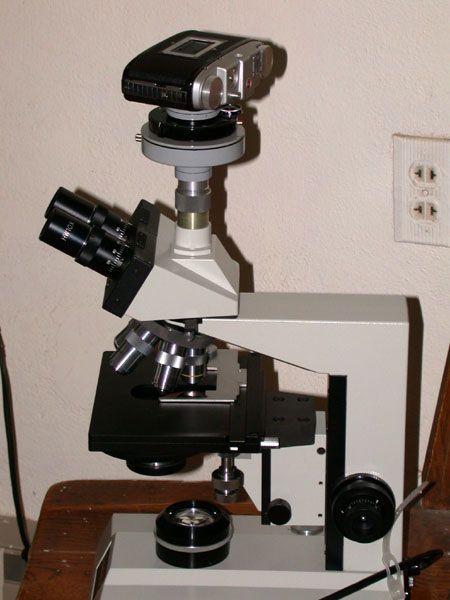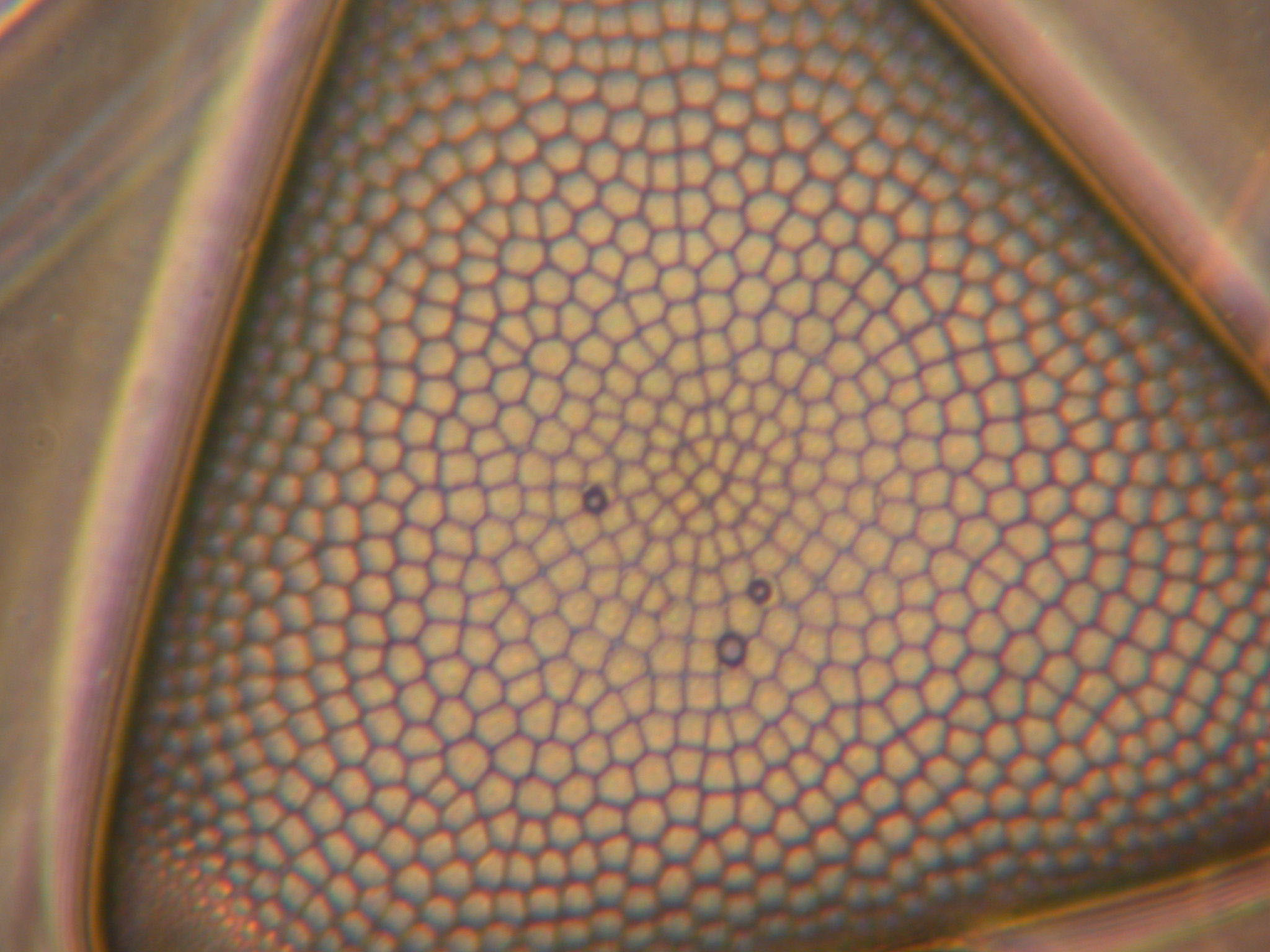
|
A Circa 1984 Parco Meiji Phase Contrast Compound Microscope By David B. Richman Mesilla Park, New Mexico |
A few years ago, when I was just starting to think of following my interest in microscopy, I inquired at “Micscape” about possible microscopes I might buy. I was put in touch with William Amos, a retired aquatic biologist, and after some correspondence Bill offered to sell me his Parco trinocular phase contrast compound microscope. He explained that it had really been built by the Japanese Meiji Optical company, but that they had made microscopes for other companies back then. Brian Bracegirdle states in his “Notes on Modern Microscope Manufacturers” that Meiji stopped making the microscopes for other companies in 1982, but Bill purchased the instrument in 1984, so it was either a hold-over or Bracegirdle’s date is slightly off. In any case it had hardly been used, as Bill had another scope and the Parco Meiji had remained in a closet. The price was right and so I bought it and Bill duly shipped it from Vermont to Mesilla Park. He also sent a short manual on how to use the scope, and most importantly how to put it together and calibrate the phase contrast. I got it set up and found that he had an old Kodak Pony camera attached. The optics were great and I had been sold enough on Meiji that I also acquired a new dissecting microscope from them.
There was a five-objective nose-piece, but the microscope had only four phase contrast objectives (5X, 10X, 40X and 100X oil immersion). I added a Meiji 20X phase contrast objective and the microscope was now complete. The objectives are Parco-labeled 4X/0.10 DIN, 10X/0.25 DIN, 40X/0.65 DIN and 100X/1.25 DIN, plus the Meiji-labeled 20X/0.40 DIN.
The views through the Parco Meiji are spectacular. It is this instrument that I use for observations on living diatoms, ciliates, flagellates, rotifers, etc. For identification of protozoa the views are easy to compare with photos in Patterson’s book “Free-living Freshwater Protozoa”, as the phase contrast images are quite similar in general appearance to those in the book. The fields are flat and the focus is excellent to the edge of the field. In short, this Meiji-made Japanese instrument is as good as any but the most exacting Zeiss or Leica microscopes.
I have yet to find time to use this microscope to its full potential, but I recently acquired a Nikon Coolpix 995 and microscope adapter so I now should be able to expand my work. The camera is attached to the microscope with an adapter made from a widefield 10X microscope eyepiece glued to a Crystal Optics filter ring (generously supplied to me by a fellow microscopist in Tucson, Arizona.) Two shots I took of Triceratium diatoms from McMurdo Sound, Antarctica (slide prepared by Robert McLaughlin), through the Parco Meiji show a bit of what it can do.
Comments to the author, David Richman, are welcomed.
.
Parco Meiji trinocular phase contrast compound microscope
Close up of ocular and objective system |
Close up of stage and phase contrast mechanism |
Close up of mechanical stage |
Close up of illuminator and mechanical stage controls |
Kodak Pony Camera on trinocular head |
Triceratium from Antarctica (McMurdo Sound) 200X taken with Nikon Coolpix 995 |

Triceratium from Antarctica (McMurdo Sound) 400X taken with Nikon Coolpix 995
Please report any Web problems or offer general comments to the Micscape Editor.
Micscape is the on-line monthly magazine of the Microscopy UK web site at Microscopy-UK.